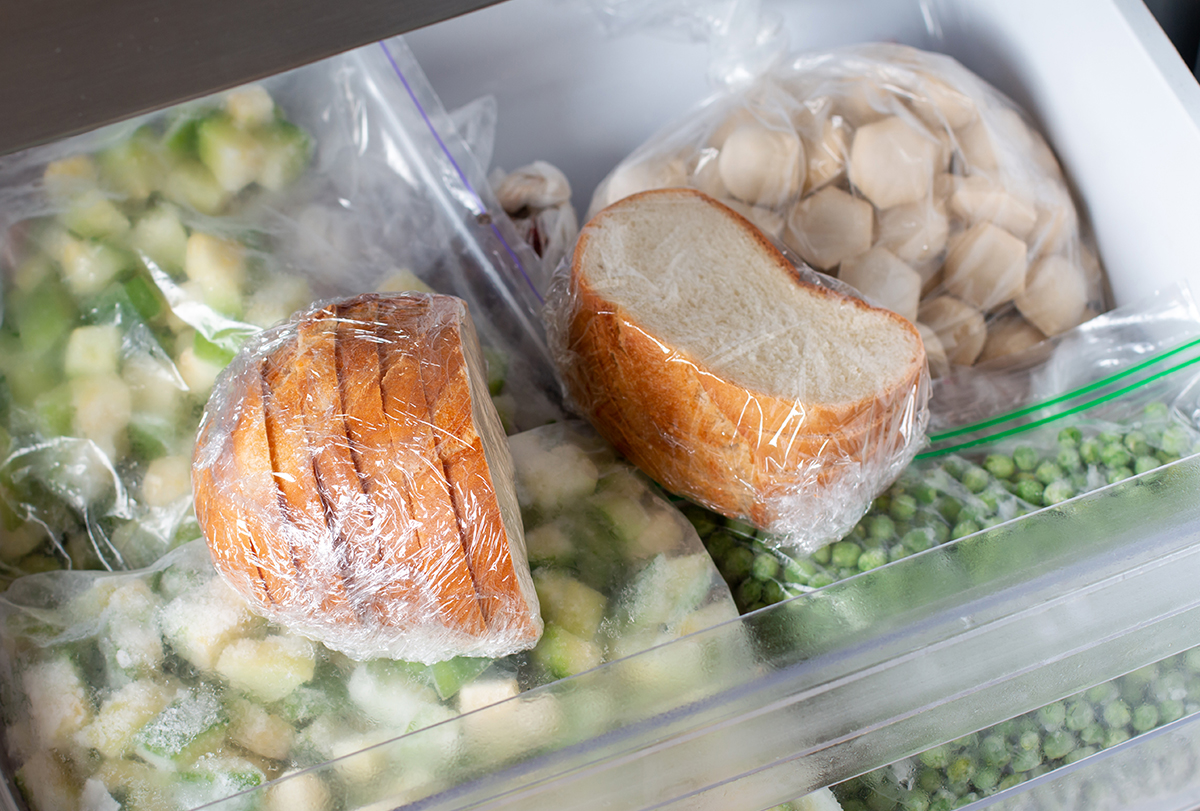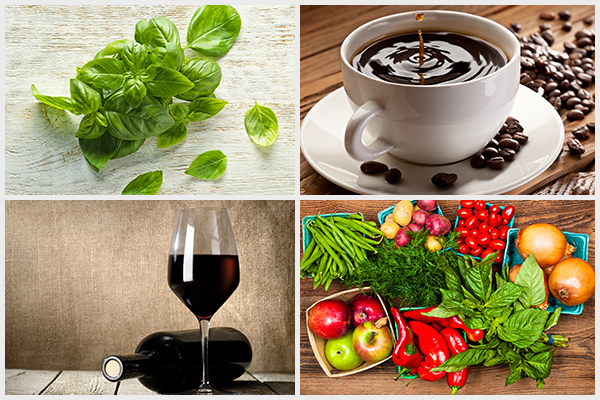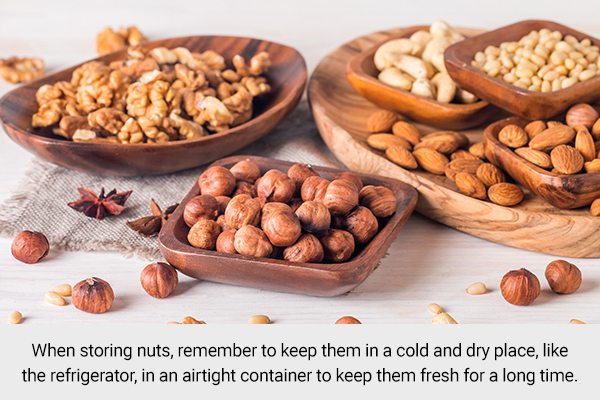In this article:
Edible items are prone to damage if not stored correctly and may start to go bad with time. These are often stored incorrectly simply because either you have forgotten about them or you do not know the right way to store them.

Buying food or medicine from a clean, hygienic, and well-known place will be futile if they are eventually going to spoil; they will lose their taste, appearance, and even nutritional value.
Eating edible products that have been stored improperly can keep you from getting any health benefits, even if they haven’t spoiled entirely.
But there is an even greater risk of contamination with germs and microorganisms if food isn’t stored the proper way. These germs can result in stomach aches, indigestion, diarrhea, vomiting, or fever.
Severe conditions such as kidney failure, blood infection, and even paralysis can also occur. Babies, children, the elderly, and people with compromised immune systems are at greater risk if they consume spoiled items. (1)
Common Improperly Stored Edible Items
Here are some foods commonly used in most households but are stored incorrectly and how to store them right.
1. Raw meat
Meat storage can be tricky but the right information can be very helpful. Here’s what you should remember when storing and handling raw meat: (1)
- Refrigerate meat, poultry, fish, or seafood in leak-proof containers, so that their juices or fluids don’t spill out.
- Separate raw meats, poultry, fish, and seafood from raw vegetables, fresh fruits, and cooked food.
- Wash your hands, utensils, chopping boards, and kitchen slabs carefully after using them to prepare raw meats.
- When cooking, do not put cooked meats back on the dish that carries raw meats.
2. Bread
Bread is a common food item consumed by many people daily, especially for breakfast. Staling (drying and hardening) and microbial spoilage are major factors that contribute to the significant amount of global wastage of bakery products.
During the storage period, bread undergoes physicochemical changes such as loss of moisture and crumb hardening, loss of palatability, and microbial spoilage, making bread less appealing. Bread is also susceptible to fungal contamination, which can limit its shelf life.
To prevent these, it is recommended to store bread in a bread box, which reduces bread’s exposure to air. This has been found to be the most stable and suitable storage method that discourages microbial spoilage.
If you do not have a bread box, a plastic bag can also be used to prevent spoilage at room temperature.
It is important to note that bread should not be stored in the refrigerator or near sources of heat, as this can accelerate staling and spoilage. (2)
3. Potatoes
Potatoes have a place in every household as they are everyone’s favorite in one form or the other. And while potatoes don’t spoil easily, storing them right can increase their shelf life.
In one study on the storage of potatoes at three temperatures – room temperature (20-39 °C), at 16–30 °C, and refrigerated storage (2–4 °C) – for 14 weeks, less than 10% physiological losses in potatoes were observed when stored at 16–30 °C. Sugar content was also least affected at this temperature, and the potatoes were most suitable for chips and French fries due to lower physiological losses.
Additionally, potatoes should not be exposed to unfavorable conditions such as bright direct sunlight and extreme temperatures, and they should not be stored in a container that can cause bruising. This can result in the accumulation of glycoalkaloids, which are toxic substances. (3)(4)

4. Cooked food and leftovers
Cooked food should be rapidly cooled down for storage below 4 °C to prevent the growth of unwanted pathogens. Leftovers should be stored similarly in a fridge or freezer.
Cream-filled pastries, salads with dressings, and dishes with potato or egg should be refrigerated if not eaten immediately. Make sure your fridge is set at a temperature of 4 °C or below. (1)
5. Basil leaves
Research has shown that packaging of basil leaves in low-density polyethylene (LDPE) bags (a type of lightweight and flexible plastic) and storing them at 5 °C prevented the wilting of basil leaves when compared to those stored in open trays at room temperature.
If stored well, your basil leaves are good for up to 12 days in comparison to only 6 days in open trays at room temperature. (5)
6. Coffee
Coffee is one of the most popular and widely devoured beverages globally. You probably wouldn’t think there might be a right way to store dry coffee beans, but experts recommend:
- A neutral environment without strong smells such as that of onion or garlic
- Vacuum packaging, to avoid moisture touching the coffee beans
- Low storage temperatures to preserve flavor and polyphenols
Research has shown that the shelf life of coffee samples stored at 25 °C was 82–92 days and at 45 °C was 20–23 days. (6)
Store coffee (whole beans or grounds) in an opaque and airtight container, away from heat, and at room temperature to conserve freshness and flavor. (6)

7. Wine
Winemaking techniques involve careful vineyard management with controlled fermentation and aging within barrels. Also, a suitable storage time in the bottle is important to increase its desirability. This reduces bitterness and sharpness with an improvement in aroma.
Here are some points to remember when storing wine: (7)
- Wine bottles must be closed with appropriate stoppers and stored in adequate, stable conditions.
- Although wine can be stored in plastic bottles or plastic/cardboard containers, glass is preferred as it is a hermetic material and prevents scents from entering and air from escaping. It also doesn’t interfere with the flavor.
- Using screw caps for wine bottles preserves it for longer by reducing oxidation.
- A temperature range of 15–17 °C is optimum for wine preservation. Lower temperatures hinder the aging process, and higher temperatures (>20 °C) accelerate oxidation.
- Minimize exposure to light.
- Store wine bottles horizontally to restrict uneven oxidation.
8. Fruits and vegetables
Here’s what to remember when storing fruits and vegetables: (8)
- If a large quantity of fruits and vegetables is to be stored, divide the storage areas with different sections for each item. You can use Tupperware containers or baskets to create different areas. Ensure ventilation in each area of storage.
- Store fruits and vegetables away from each other.
- Wrapping fruits individually prevents the smells from transferring. You can use beeswax wraps to avoid plastic waste.
- Do not store apples with potatoes or carrots as ethylene gas from the ripening apples can cause sprouting in potatoes and can turn carrots bitter.
- Slatted crates (wooden or plastic containers with gaps between the slats) can also be used for storage of fruits/veggies.
- Discard all crushed, bruised, or decaying bits of vegetables and fruits.
9. Nuts

When storing nuts, remember to keep them in a cold and dry place, such as the refrigerator, in an airtight container to keep them fresh for a long time. Avoid storing them in a warm place.
For example, almonds, walnuts, cashews, pistachios, hazelnuts, and pecans can be kept in a clean plastic bag or a glass jar. (9)
Additional Tips for Healthy Food Habits
Here are some additional tips to keep your family safe: (1)
- Properly rinse fresh fruits and vegetables under running tap water before eating or cooking.
- Avoid giving young children raw or undercooked alfalfa, mung beans, or other sprouts because the seeds may be contaminated with pathogens.
- Avoid giving honey to children under 1 year.
- Wash your hands thoroughly with soap and water before you cook or handle food.
- Wash your hands after handling raw meat, poultry, or seafood.
Most-Asked Questions
How do germs get into food?
Here’s how food can get contaminated: (1)
- Food from animal sources (such as meat and chicken) can contain germs from the animals.
- Vegetables and fruits can accumulate germs from the soil.
- Germs can also get in your food when it is handled, processed, stored, or transported.
Why should I store food in my refrigerator?
Germs commonly grow extremely slowly in the refrigerator and grow more rapidly at room temperature. So, storing in the refrigerator is much better, especially for meats. (1)
Final Word
Keeping your food fresh and protected from germs for extended periods helps you avoid getting sick and will save you money. So, it is important to know where and for how long you can store different varieties of food. What needs to be refrigerated and what does not should be understood.
Most prepacked food comes with labels to provide storage instructions that should be followed. The storage tips help discourage food spoilage and lessen food wastage.
- Was this article helpful?
- YES, THANKS!NOT REALLY


